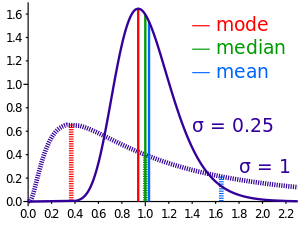I wrote a post about pay disparity and the gender gap the other day. It has been pointed out to me that the data that says women make 77 cents on the man-dollar is flawed. Since I was called out by name and told my quoting that statistic was “bullshit,” I feel the need to respond.
It’s probably true that the data is flawed. There are way too many factors that go into the entire labor force of the United States to ever have an average be anything other than an average, i.e. the quotient of the sum of several quantities divided by their number.
An average smooths out all the rough edges. If you were to average the age of one infant and one octogenarian and give it to alien visitors as an average age of people on earth, our new alien overlords might think that all humans were 40-something. By their very nature, averages don’t consider all the variables. Their job is actually to get rid of the variables.
As I commented on the post that called me out:
“While I agree that statistics don’t tell the whole story nor are they necessarily even entirely accurate, you have to have a baseline. Discussions like this one have to start somewhere. Obviously, there are a lot of factors that can shift the data and I would never say that, simply based on the national average, I am paid less than I’m owed. Show me any average that takes every possible scenario into account. It doesn’t exist. By their very definition, averages smooth out all those mitigating factors.”
Averages can be flawed. To have an even remotely accurate average, you must compare like to like. To go back to our alien visitors example, if you were to throw a dog into the mix with the baby and the octogenarian, your average age would lower to somewhere around 30-something and it wouldn’t be an average human age anymore. Some statisticians might still consider that average relevant, since the majority of the data points are human. Those people would clearly be wrong and bad at their jobs. My point is that, until you see the actual data set used in making an average, you can’t really be sure how accurate it is.
Regarding my post the other day, I admit that saying that “on average, women earn roughly 77 cents for every dollar their male colleagues earn” was not telling the whole story. I used a readily available statistic that the White House used, which actually has a range of 73.7% to 77%. I was being optimistic when I said 77, but other data has it as high as 81%.
In any event, it is too broad a generalization and we can’t entirely be sure what data went into making up the average. I used it as a baseline, not as a hard and fast fact, thought that’s what it may have looked like. It may have seemed as though I was using that average as a beating stick, when really, I was only trying to open a discussion. Implying that statistic was entirely accurate was not my intent.
Please forgive me for improperly using averages. How silly of me to quote the exact information that the President of the United States quoted when he talked about pay disparity. I should have known better than to trust the government.
There is a lot of data out there on pay disparity. Some has it as high women earning 88 cents on the man-dollar, other averages are as low as 69. It is all dependent on what data went into the average. The elephant in the room that this niggling over averages seems to dance around is that there is a gender gap.
As I said in the rest of my comment on that post, “Picking on data seems like a straw man argument. A valid straw man, mind you, but it’s a sleight of hand to distract us from the issue that women ‘on average’ are paid less than men.” Somewhere in that 19 to 26.3% range, aside from work experience, education, taking time off to have babies, etc., there is a real gender gap. Somewhere in all that averaging of data, women are paid less for doing the same job with the same work experience and education. I don’t know how big the gap is nor how many women it affects, but no matter which percentage you cite, it is there.
Whether women make 73.7% or 81% (coincidentally, when averaged, that’s 77) or even 99% of what men make, it doesn’t matter. If it’s not 100%, it’s not good enough. Even if it turns out to be only one woman who is discriminated against based on gender, that’s still too many.







